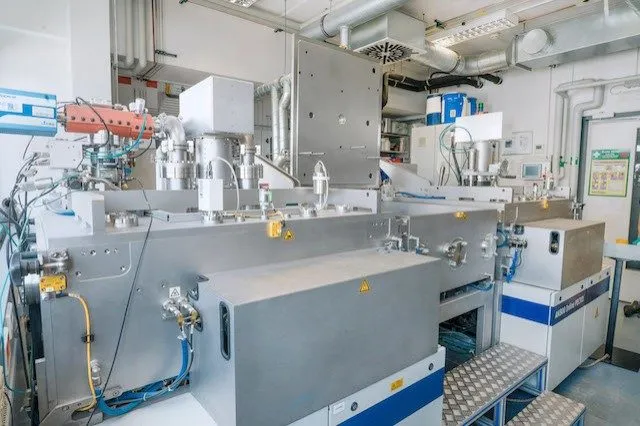Fabric-based solar cells on the horizon
Aug 5, 2019 10:38 PM ET

New textile-based solar cells developed by Fraunhofer researchers, semitrailers could soon be producing the electricity needed to power cooling systems or other onboard equipment. In short, textile-based solar cells could soon be adding a whole new dimension to photovoltaics, complementing the use of conventional silicon-based solar cells.
In the future, we may well see other surfaces being exploited for photovoltaic generation. Truck tarps, for example, could be used to produce the electricity consumed by the driver when underway or parked up for the night, or to power electronic systems used to locate trailers in shipping terminals.
Similarly, conventional building facades could be covered with photovoltaic textiles in place of concrete render. Or the blinds used to provide shade in buildings with glass facades could be used to create hundreds of square meters of additional surface for producing power.
Glass-fiber fabric as a solar-cell substrate
At the heart of such visions are pliable, textile-based solar cells developed at the Fraunhofer Institute for Ceramic Technologies and Systems IKTS, in collaboration with the Fraunhofer Institute for Electronic Nano Systems ENA and Sächsisches Textilforschungsinstitut e.V.
“There are a number of processes that enable solar cells to be incorporated in coatings applied to textiles,” explains Dr. Lars Rebenklau, group manager for system integration and electronic packaging at Fraunhofer IKTS.
In other words, the substrate for the solar cells is a woven fabric rather than the glass or silicon conventionally used. “That might sound easy, but the machines in the textile industry are designed to handle huge rolls of fabric – five or six meters wide and up to 1000 meters in length,” explains Dr. Jonas Sundqvist, group manager for thin-film technology at Fraunhofer IKTS.
“And during the coating process, the textiles have to withstand temperatures of around 200 °Celsius. Other factors play a key role too: the fabric must meet fire regulations, have a high tensile strength and be cheap to produce. “The consortium therefore opted for a glass-fiber fabric, which fulfills all of these specifications,” Rebenklau says.
Also read
- BNDES Admits Arctech to FINAME, Boosting Solar Trackers Across Brazil
- TCL Solar Secures 250 MW Pakistan Distribution Deals to Accelerate Growth
- UbiQD Secures Landmark Quantum Dot Deal with First Solar
- Astronergy Invests $53M in Tandem Solar Cell Project
- ARENA Unveils $39M Solar Innovation Funding Round
